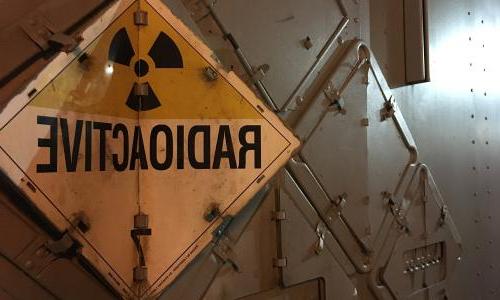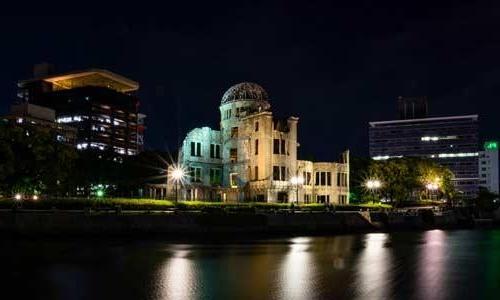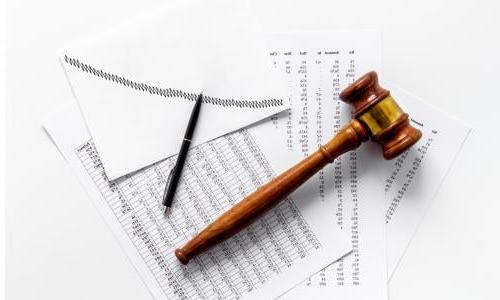放射性物质是自发分解的元素, 或“衰变,变成更轻的元素. Radiation is energy that’s 释放d during that process—和 it can be dangerous.
什么是放射性物质?它们是如何造成损害的? 铀:铀等物质, 例如, is associated with harm to the human body based on its chemical structure as a heavy metal 和 its radioactive properties. 作为化学危害的一个例子, exposure by the developing human body to heavy metals (rather than 辐射) is associated with delayed brain development. Researchers often study either chemical or 辐射 harms separately but not as mixtures. Hazardous materials are commonly found in the environment as a mixture with other hazardous materials, 但研究并没有考虑到这些混合物. 这里我们只关注辐射.
辐射源和类型
放射性物质也被称为 放射性同位素 或者放射性核素——是自发分裂的元素, 或“衰变,变成更轻的元素, 这样做的时候, 释放 辐射即以粒子或波的形式存在的能量. 一些放射性物质,如 铀 和 氡,自然发生和其他,如 钚,仅由人类活动产生(人为起源).
Elements on the periodic table are defined by the number of protons their atoms have. 例如,铀的原子序数是92,因为它有92个质子. Elements with the same number of protons but different numbers of neutrons are called 同位素 of that element 和 are denoted by the number of protons plus the number of neutrons. 所以,当铀有146个中子时,它被称为铀-238.
A 放射性同位素 一种元素的同位素具有放射性. Radio同位素 generally behave the same way chemically but have different radioactive properties.
Some take thous和s or millions of years to decay 和 others do so relatively quickly. 的 半衰期 同位素的时间是样品中一半原子衰变所需的时间.
| 同位素 | 半衰期 | 笔记 |
|---|---|---|
| 镅- 241 | 470年 | |
| 镅- 243 | 超过7500年 | |
| 铯- 134 | 2年 | |
| 铯- 137 | 30年 | |
| 碘- 131 | 8天 | |
| 钚- 238 | 87.7年 | 核反应堆制造 |
| 钚- 239 | 24110年 | 核反应堆制造 |
| 镭- 224 | 3.5天 | |
| 镭- 226 | 1600年 | |
| 镭- 228 | 6.7年 | |
| 氡 | 3.8天 | |
| 锶- 90 | 29年 | Produced for medical uses, also present in nuclear waste from reactors 和 in nuclear test fallout |
| 钍- 232 | 140亿年 | |
| 氚 | 12.33年 | |
| 铀- 234 | 245000年 | 0.天然铀重量的0.01% |
| 铀- 235 | 7.04亿年前 | 0.占天然铀重量的71% |
| 铀- 238 - i | 4.460亿年 | 99.天然铀重量的28% |
当放射性同位素衰变时, it may emit energy (辐射) in the form of alpha or beta particles or gamma rays. If the energy of these particles or rays is high enough, that 辐射 can damage living tissue by 电离或从原子或分子中剥离电子. 辐射也可以是非电离的(以可见光或热的形式)。, but for this explainer we are focused on the following types of 电离 辐射, 在核武器的生命周期中,它们经常被放置在环境中.
阿尔法粒子 带正电的最重放射性元素(e.g., 钚, radium, 铀) 和 can be blocked by a sheet of paper or a few inches of air. 它们不能穿透皮肤, 但如果被摄入或吸入会非常有害, 或者它们通过切口进入人体. 的y do not travel far in the body due to their size 和 low energy (although they can travel deeply into the lungs), 和 instead deposit their energy in a localized area 和 释放 large amounts of 辐射 on a few neighboring cells.
β粒子 are negatively or positively charged particles ejected from the atom during the decay of 放射性同位素 such as 氚(hydrogen-3) 和 锶- 90. 它们大约是1/8,粒子质量的万分之一, which allows them to travel further in the air—a few feet—before being absorbed. 虽然它们通常被衣服挡住了, 粒子被人体吸收后是危险的.
伽马射线 不是粒子而是电磁波吗, 或者光子,比如可见光, 但是能量要高得多, 所以它们在电离. 因为它们没有质量, 伽马射线可以穿透衣服和皮肤, 然后通过破坏细胞或破坏DNA来损害身体. Thus, gamma-emitting radioactive elements are dangerous even if not ingested or inhaled, 和 重要的预防措施 需要铅(Pb)屏蔽来阻挡这种辐射.
如何测量辐射
Radiation is measured in different ways depending on what kind of information is relevant. 的 释放 of 辐射 to the environment from a radioactive substance is measured using a becquerel (Bq), 每秒衰变一个原子, 或居里(Ci), 一克镭每秒钟衰变的原子的大约数目. 的 important quantity for absorbed 辐射 in the human body is energy per mass, which is measured in units of gray (Gy)—the energy (in joules) absorbed per kilogram of tissue—or rad (1 Gy = 100 rad).
因为辐射的类型会影响吸收, 吸收辐射的器官的灵敏度也是如此, 另一个单位叫做 有效剂量 根据这些考虑因素进行调整. Effective dose is used to set protective 辐射 exposure limits, measured in sieverts (Sv) or rem. 的se values are based on population statistics 和 may not represent differences 和 risks in individuals. 快速眼动, rad, 和居里都是美国的计量单位, 和贝克勒尔, 灰色, 西弗是国际单位.
| 国际617888九五至尊娱乐单位名称 | 美国单位名称 | 单位价值 | 最好的使用 |
|---|---|---|---|
| 贝克勒尔(Bq) | 居里(Ci) | Bq =每秒衰变一个原子 Ci =每克镭中每秒衰变的原子的大约数目 | 物质的放射性 |
| 灰色(Gy) | Rad | 每质量能量, measured by the absorption of 1 joule of energy per kilogram of tissue (1 Gy = 100 rad) | 暴露:被身体吸收的暴露 |
| 西韦特(Sv) | 快速眼动 | 与吸收能量相比,辐射造成的组织损伤(1西弗= 100雷姆) | 有效剂量和保护性暴露限值 |
Naturally occurring 辐射 at sea level is usually less than 1 milligray (mGy) per year, 主要来自宇宙射线和吸入的氡. 在高海拔地区,人们接触到的宇宙射线更多, 所以在跨大西洋飞行中吸收的宇宙射线是0.2毫戈瑞,而计算机断层扫描(CT)扫描大约是15到20毫戈瑞.
核爆炸产生的辐射可以被带到离爆炸地点很远的地方. 以1954年马绍尔群岛的布拉沃城堡试验为例 15吨, the most powerful US nuclear weapon ever detonated—the fallout 和 debris cloud spread over a 110-mile radius. 甲状腺吸收的辐射 ranged between 10 Gy for adults 和 50 Gy for a one-year-old in Rongelap atoll (average 全身外剂量 为810毫焦耳).
的 detonation of a nuclear weapon will produce gamma rays initially which quickly tapers off, 可以让粒子在这个区域停留一段时间.
相关的讲解员

辐射如何与人体相互作用
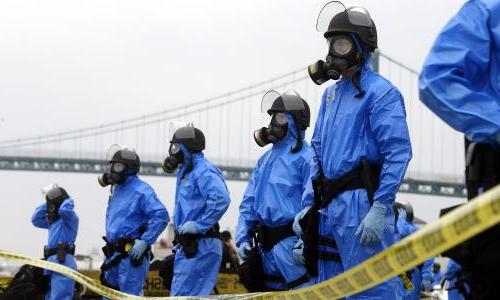
辐射从何而来
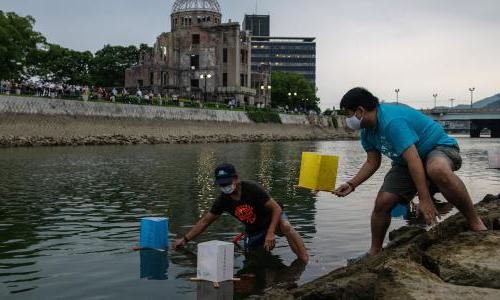
辐射照射对健康的影响
的 Union of Concerned Scientists has worked on nuclear weapons-related issues for more than 50 years. 参与进来吧.
